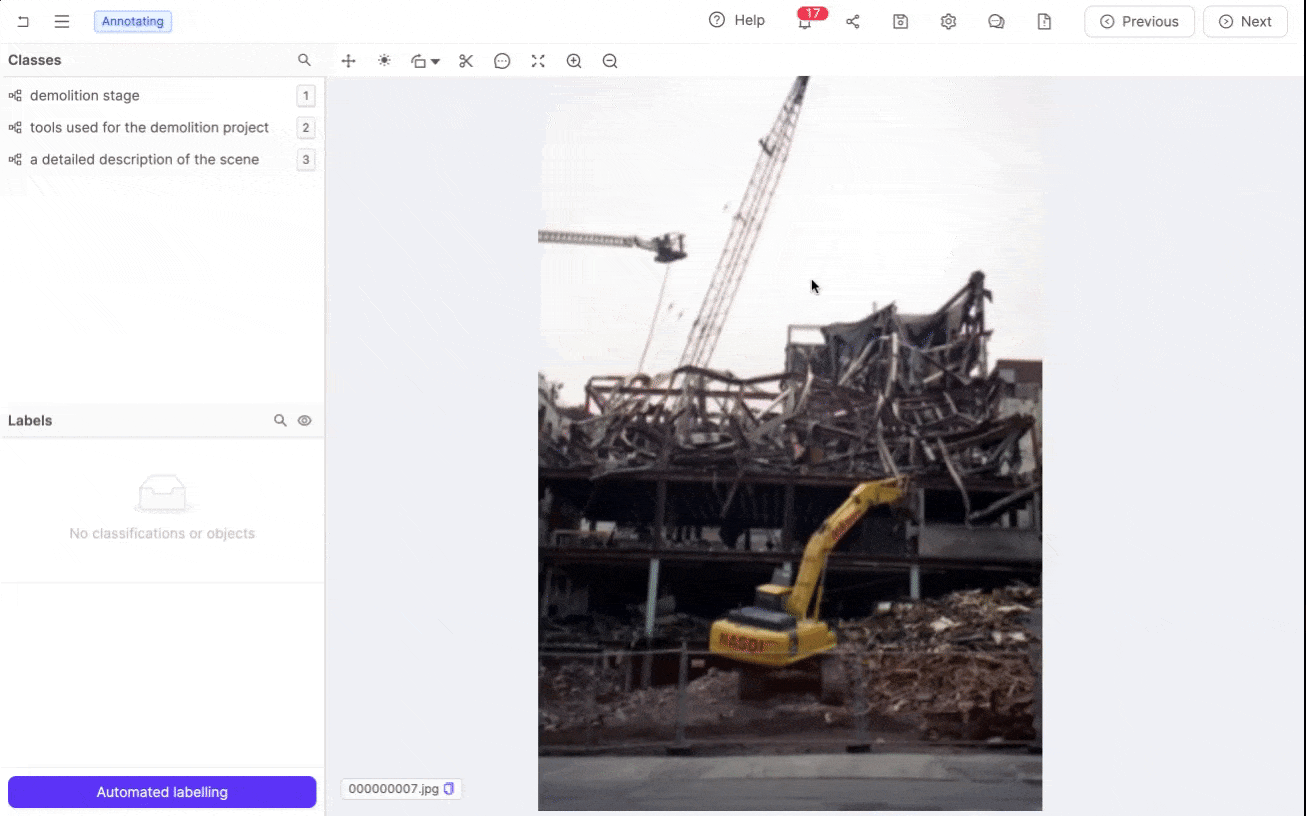Contents
GPT-4o Highlights
GPT-4o vs other SOTA Multimodals
Usecases of GPT-4o for Model Development
Using GPT-4o for Data Curation with Encord
Encord Blog
How to Use GPT-4o for Model Development with Encord
5 min read

How to Use GPT-4o for Model Development with Encord
This spring there has been a wave of releases of multimodal models from the tech giants. OpenAI didn’t shy away from the challenge and released GPT-4o in the same week Google and Anthropic released their recent models.
In this blog, we will look at how GPT-4o can be used in the model development process and discuss how Encord uses GPT-4o in the data curation pipeline.
Whether you're a developer, business owner, or researcher, GPT-4o offers unparalleled opportunities to accelerate your AI projects.

GPT-4o Highlights
With the release of GPT-4o or GPT-omni, OpenAI calls this a step towards natural human-computer interaction. Here are the highlights of the recent model of the GPT family:
Multimodal Capabilites
GPT-4o accepts any combinations of text, audio, and image inputs. It can generate corresponding outputs in any of the three modalities. It also shows improvement in its vision and audio comprehension compared to the previous models of the GPT family. Its advanced processing capabilities enable it to better interpret and generate content from images and audio, making it a powerful tool for applications requiring high-quality visual and auditory analysis.
Increased Speed and Efficiency
GPT-4o can respond to audio inputs in as little as 232 milliseconds, with an average response time of 320 milliseconds, closely mirroring human conversational speed. This significant enhancement over previous models ensures more fluid and interactive experiences. GPT-4o not only surpasses its predecessors in speed but also reduces API costs by 50%, making it a highly economical option for developers and businesses.
Enhanced Language and Code Proficiency
GPT-4o performs on par with GPT-4 Turbo in English text and code comprehension. However, it truly shines in non-English languages. Developers can leverage GPT-4o across more than 50 languages using the API. Whether you’re building applications in English, Spanish, Mandarin, or any other language, GPT-4o has you covered.
End-to-End Model Integration
Unlike previous iterations that relied on separate models for transcription (Whisper), processing (GPT-3.5 or GPT-4), and audio output, GPT-4o is trained end-to-end across all modalities. This integration allows the model to maintain context, recognizing tone, multiple speakers, and background noises while also being capable of outputting laughter, singing, and emotional expressions.
GPT-4o vs other SOTA Multimodals

Text Evaluation. Source
The native multimodality of GPT-4o allows for a more comprehensive and natural interaction between the user and the AI. GPT-4o is not just an incremental upgrade over its predecessors; it introduces several new features that enhance its performance, particularly in multilingual, audio, and vision capabilities. It also boasts faster response times, with an architecture optimized for generating tokens up to twice as fast as the previous model, GPT-4 Turbo.
When compared to other state-of-the-art (SOTA) multimodal models like Gemini 1.5 Pro and Claude 3 Opus, GPT-4o stands out for its high intelligence and ability to handle complex tasks. For instance, it matches the performance of GPT-4 Turbo in text, reasoning, and coding intelligence but sets new benchmarks in its ability to process and integrate information from different modalities.

Vision Understanding Evals. Source
However, its reach may be limited due to its availability only on platforms like Google Cloud’s Vertex AI in a limited preview. The performance comparison across various evaluation sets shows that GPT-4o considerably outperforms existing large language models and most SOTA models, which may include benchmark-specific crafting or additional training protocols.
Usecases of GPT-4o for Model Development
The demo by OpenAI showed many real-world applications of GPT-4o like tutoring, assisting developers in collaborative coding, voice-driven data visualization, and many more. By providing free access to GPT-4o, we can certainly see its integration in many industries.
Here are a few ways you can use GPT-4o in your model development pipeline:
Automated Code Generation
GPT-4o’s high performance in code-related tasks can assist in automated code generation, bug detection, and code optimization. It can serve as an intelligent assistant for developers, enhancing productivity. For example, creating an integrated development environment (IDE) plugin that provides real-time code suggestions, debugging tips, and documentation generation.
Integrating with Existing Models
GPT-4o can be integrated with platforms like Encord to streamline workflows and enhance collaboration. Its multimodal capabilities complement Encord’s features, enabling more efficient model development and deployment. For example, while using Encord to curate datasets, you can use GPT-4o to preprocess data, and tweak or validate labels, resulting in a more efficient development pipeline.
Image Analysis
GPT-4o’s proficiency in handling image data can be utilized for image recognition, classification, and analysis tasks. This is particularly useful in fields such as healthcare for medical imaging or security for facial recognition. For example, developing a diagnostic tool that can analyze medical images to detect conditions like tumors or fractures.
Using GPT-4o for Data Curation with Encord
With release of GPT-4o, Encord has integrated it in, and it's ready to use in its annotation platform. With the feature of custom agents of Encord, you can add any other multimodal model like Gemini or Claude into your data curation pipeline. Whether it's generating contextual labels, enriching metadata, or automating annotation tasks, the integration of multimodals through Encord's custom agents opens up possibilities for streamlining your data curation efforts.

Here are few ways you can use the GPT-4o or other multimodal models for your data curation process:
Auto-Classification
You can automatically classify the data into predefined categories or labels based on the ontology. By analyzing text, images, and other modalities, these models can intelligently categorize data, reducing manual effort and ensuring consistency in classification.
Image Transcription
If there is text in the image, you can either transcribe the image or use the multimodal model to generate additional information, context, or metadata. This enrichment enhances the value of curated datasets, providing deeper insights and facilitating more comprehensive analyses.
Data Cleaning
GPT-4o's natural language processing capabilities enable it to sift through vast datasets, identifying and rectifying inconsistencies, errors, and outliers. This automated data cleaning process not only saves time but also ensures the integrity and quality of the curated data.
Explore the platform
Data infrastructure for multimodal AI
Explore product
Explore our products
GPT-4o, or GPT-omni, is OpenAI's latest multimodal model, excelling in natural language understanding and processing text, audio, and images.
GPT-4o is invaluable for automated customer support, content generation, personalized recommendations, and enhancing data analysis in industries like e-commerce, healthcare, and finance.
Encord allows for the integration of custom models directly into the annotation workflow. Instead of manually converting outputs to a specific format, users can leverage the detection node feature, which enables seamless running of models within the platform, significantly simplifying the data handling process.
Encord is designed to enhance GPU resource management by providing tools for sharing resources effectively among multiple users. This includes managing RAM, storage, bandwidth, and GPU memory to ensure that all team members can efficiently run their training without significant slowdowns.
Encord supports flexible model development and integration by allowing users to incorporate both open-source models and proprietary solutions. This adaptability ensures that users can leverage the latest advancements in machine learning without being tied to a rigid, monolithic solution.
Yes, Encord is designed to help users optimize their model management. By integrating as much relevant data into a single model as possible, users can achieve better performance while still maintaining the flexibility to work with multiple models when necessary.
Encord provides built-in capabilities for iterative model development and pre-labeling, enabling users to refine their models over time. This feature is particularly useful for projects requiring continuous improvement and adaptation of models based on new data.
Encord serves as a one-stop shop that integrates various functionalities, reducing the need to switch between multiple tools and scripts. By consolidating these processes, Encord simplifies the model training workflow and accelerates the delivery of new models.
Yes, Encord supports the integration of custom models, enabling users to utilize their unique algorithms within the platform. This flexibility allows teams to maintain their preferred workflows while benefiting from Encord's capabilities.
Encord provides flexibility for customers to bring their own models to the platform. This includes the option to submit forecasts as additional entities or to create entirely new models tailored to specific use cases.
Yes, Encord supports both fine-tuning existing open source models and building custom models from scratch. This flexibility allows teams to adapt their approach based on their specific use cases and data requirements.


